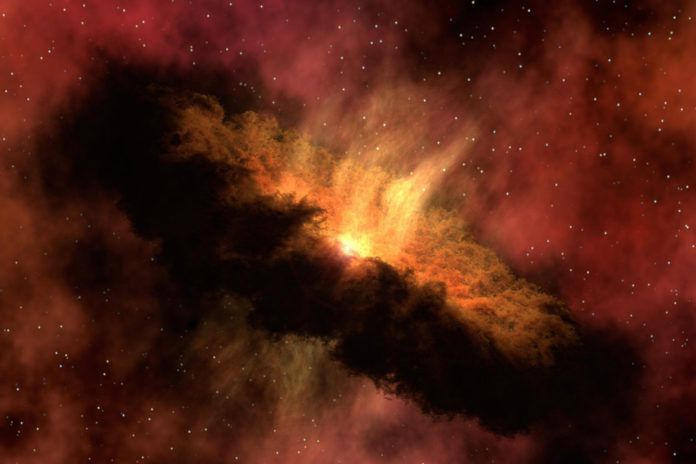U.S Strategic Command is still tracking the 400 fragments of a satellite destroyed a week earlier by the Indian military on March 27. The Indian military blew up one of its own satellites while conducting a ground-to-space missile test. 250 pieces of the debris were being tracked in orbit, most of which have fallen into Earth’s atmosphere. There has been concern and eye-raising responses about this destructive test, also about anti-satellite warfare, as well as concerns on what damage the floating debris could bring about to civilian spacecrafts. Space warfare as well as space debris is a risk and challenge, though not a novel one.
Space warfare trending back?
An email by Brian Weeden, Director of program planning at the Secure World Foundation read so, “I think most military planners from the 1960s would be amazed that we haven’t seen more conflict in outer space. During that time, it was just assumed that if the US and Soviet Union went to war that space would be a big part of it. Both sides had operational ASAT (anti-satellite) programs and plans for space wars.”
Military communications and intelligence heavily rely on satellites so it is evident why nations will want to take out the spy satellites and communication relays of their enemies. This was first experimented by the U.S in 1959, back then the space lanes were essentially empty. Russia followed suit in the late 1960s and later in the early 1970s. The inclination for space warfare seemed to die down after the end of the Cold War.
“But now it seems like we’re heading back to a world where future conflict on earth is likely to extend into space,” further read Weeden’s email.
Between Russia’s venture of testing in early 1970s and today, the space orbits have gotten more crowded comparatively where Earth is now surrounded by multiple satellites and spacecrafts which are assisting and aiding the infrastructure of the modern life which include but are not limited to weather forecasts, GPS navigation, telecommunications and the likes. If nations do revert to space warfare, the stakes get higher and collateral damage is estimated to be much more than before.
Though nations have not come up to a stand-off of blowing up each other’s satellites, the space lanes near our Earth are already cluttered to an extent that the U.S Space Surveillance Network, which is a part of the U.S Strategic Command, is tracking about 40,000 objects in the orbit around Earth. Some of these bits of space debris are moving at a speed of around 38, 000 kilometers per hour. At that speed, “Even a 1cm nut could hit with the force of a hand grenade,” notes the ESA.
“Thankfully, so far we’ve seen actual combat operations like in Ukraine and Syria use non-kinetic counter-space capabilities such as jamming or cyber-attacks. We have yet to see a real-world use of a kinetic ASAT weapon in a conflict, and hopefully we never will.”
Risk lowers with a lower altitude
The Indian satellite that was destroyed on March 27 was a defunct satellite orbiting at 300 km. The debris of this is termed by the European Space Agency’s Space Debris Office as being “moderately hazardous” to low orbiting spacecrafts such as the ESA’s Aeolus Satellite, which functions to monitor the winds of the Earth. The paths of the debris caused after the March 27 test are not modeled well enough for mission planners to be cautious and use any available data in making decisions about how to move their spacecraft out of harm’s way.
“For the first few days after the event, you always have a dark risk, because you know you’re surrounded by fragments, and you don’t know where they are. There’s not much you can do because escaping from the cloud would mean a drastic change to the mission which cannot be done,” said Holger Krag, head of the ESA’s Space Debris Office, in a recent interview. “We concluded that you need to go really far away if you want to escape from the fragment cloud in all certainty, so therefore we have decided to stay where we are and hope that actionable data comes through fairly quickly, so that we can reduce the risk,” Krag said.
The risk of Aeolus colliding with any bit of the debris has increased three-folds, although originally the risk factor was low initially said Krag.
The silver lining is that 300 km is a low altitude therefore posing lower risks as the busiest of the orbits are well above that varying between 330 and 445 kms and even busier than those are way above at 800 kms up. “At 800km the chance that (a satellite) hits a bit of space debris is ten times higher than at the altitude of 300km,” said Krag.
The lower the altitude, the easier it is for Earth’s atmospheric drag from the thin upper reaches to slow the objects down and make them fall back into Earth’s atmosphere which burn during re-entry. The hazard posed by this missile test of India is said to be temporary and as estimated by ESA’s Space Debris Office, 95% of the fragments will be out of the way within a month’s time.
“I don’t want to say that it is good to do this test, but it makes a difference that the test is in a low altitude because these objects, they disappear fairly quickly,” Krag said.
Possibility of triggering a satellite-collision domino effect
No matter what altitude explosion are we talking about, the effects of explosions cannot be calculated and estimated to point as when explosions happen, they blow things all over the place; the higher the orbit, the more time it takes for the debris to decay.
The effect can be observed based on the missile fired by the US from a guided missile cruiser, USS Lake Erie, back in 2008. The target was USA-193, a malfunctioning reconnaissance satellite, 230 km above Earth. The explosion pushed pieces of the satellite into higher orbits, as high as 500-900 km, which took up to 18 months till the last one fell back to Earth.
The strike by the US was done in order to prevent whole pieces of the satellite from re-entering Earth once its orbit decayed but many observers dissected this strike as a response to one done by China in 2007 which was an anti-satellite test against a target orbiting at 800 km. The Chinese strike is said to have had the largest debris in the history of human spaceflight, with around 3000 pieces of satellite as space debris.
Six years after the Chinese strike, in 2013, one of the pieces struck a Russian satellite, changing its orbit and orientation with respect to Earth. The pieces from the 2007 test are still reported to be tracked; which were added on in 2009 as a result of collision between two communication satellites – Iridium 33 and Kosmos-2251. The debris of both satellites and the 2007 test put together is said to be contributing to more than half of ESA’s satellites maneuvers which are made to avoid collision with space junk.
If one of the nuclear powers – India, Pakistan, Israel or China – decides to test a missile to make a point and blows up a satellite at a higher altitude, the amount of space debris is likely to increase manifold leading to more maneuvers required by satellites to avoid collisions. The situation worsens if it leads to an all-out space warfare with multiple strikes from both ends. Military tests as well as in case of an actual air strike, there are no warnings issued. The more the debris the more chances of collisions. Most spacecrafts have the tendency to alter orbits to avoid collisions with space debris but only if the operators of these satellites have prior information about the debris as well as the orbit of these. Even so, those maneuvers will require fuel, careful monitoring and precise data about the amount of space debris whizzing around in space.
“If there were hostile use of kinetic ASATs, there would likely not be any immediate effects to other satellites, but there would be a large cumulative collision risk to other satellites in the same orbital region for a long time into the future,” said Weeden. Donald J. Kessler, NASA astrophysicist explained in 1978, how the increasing amount of space debris around Earth could lead to a domino effect of one satellite collision or explosion leading to another and so on and as the amount of debris increases, so would the time to fall which will be stretched over years rather than minutes.
Peacetime Space Junk
It is not only blowing up of satellites in space that is contributing to the ever-growing debris around Earth and becoming a challenge for spaceflight; there are multiple other avenues of adding space debris. 40 to 50 new objects are added every year to the halo of discarded technology around Earth says Krag. Running out of fuel, lost communications with Earth are the main reasons of why they cannot be brought into an orbit that can eventually lead to the fall back and set these pieces ablaze in the upper atmosphere. “They are left in orbit, although they should have been actually moved out by their own power as long as they are still working,” said Krag.
Though last week’s missile test is said to not have contributed much to the threat posed by current amount of space debris; U.S. Strategic Command has still estimated a temporary increase of collision threats with small debris by 44%. The space station has had to do maneuvers and alter its orbit in the past to avoid collisions. In 2015, there was a close brush with a chunk of defunct Russian satellite when there was no ample time to plan a maneuver. At this time the crew had to take shelter in a Soyuz capsule. Similar incidents and precautions had to be taken back in 2014 as well as 2011.
This debris is not only posing collision threats but as described in an ESA report “not only collision risks but also time bombs: they risk exploding due to leftover fuel or partially charged batteries heated up by orbital sunlight.”
The proposed Space Safety Program by the ESA seeks to improve tracking of orbital junk through a combination of ground tracking and satellites in orbit. “Even objects of 1mm size can be critical for spacecraft they impact, but it’s pretty hopeless to see them from the ground; they are far too small,” Krag said. “We would like at least to get an estimate of the numbers, so we are putting up sentinels in space to measure how many of them are out there.”
Apart from taking measures to track the space junk, Krag says the next step should be to stop adding to the junk cloud. “It would be meaningless to start cleaning when we are still adding debris, so we must get better at preventing debris first,” Krag said. “If we do this successfully globally, we will have stopped the growth in the number of objects in space.”
The Space Safety Program planning involves development of a spacecraft that will have the capability of capturing a deserted satellite and push it at higher orbital altitudes way above the busy orbits, termed as graveyard orbit or push it down to lower orbits so Earth’s atmospheric drag can pull it down to Earth.
This idea has been in place for quite some time now but is an engineering challenge and as Krag says it is likely to take the ESA years before they are ready for demonstrating a workable design. Engineers at private companies, national space agencies and even the academic leg has come up with multiple designs like the sorts of harpoons, throw-nets, docking mechanisms and much more. If a workable design does come up, the spacecraft is envisaged to be orbiting the working satellites also and will play the role in repairs, maintenance, refueling and all services of the sorts for which companies and space agencies might be willing to pay a private spaceflight company.
“There is potentially a market for this, and the difference between serving a customer spacecraft and removing, that’s practically done by the same spacecraft,” said Krag. “So we hope that by enabling European industry to enter the market of on-orbit servicing, we are hopeful to stimulate a market for active removal.”
Planning ahead
Once the anti-satellite technology is out of the bag, its spread is inevitable as it has the same technology that is used for a ballistic missile defense. . “Any country that has a ballistic missile with 1,000km or more range and can build a kinetic kill vehicle has the basic components to do what India did,” said Weeden. This technology is said to have been tested against ballistic targets at sub-orbital levels but if other nations decided to respond to India’s show of force, the situation can quickly change.
“I think it’s been obvious for a while now that there needs to be at least a moratorium, if not a legally-binding ban, on testing of hit-to-kill technologies against orbital targets,” said Weeden. “It should be in every country’s interest to prevent additional destruction of satellites in a way that causes orbital debris.”
This statement is being reiterated and echoed by several space agencies and national governments in the last week; how this conversation is going to take shape on the international stage is yet to be seen. It is essential and crucial to keep the infrastructure in space working as so much developments and proceedings of the modern life relies on it.



























